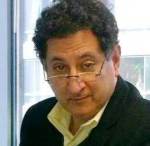Updated
Business Brief: Innovation on the Uptick on Morocco; South African Investor Looking to Add Morocco to Portfolio; Islamic Finance Moves a Step Closer; Tangier Grabs Headlines for Place to do Business and Have Fun – Jean R. AbiNader
Jean R. AbiNader, MATIC
March 9, 2017
Recent figures released by the government of Morocco show increases across the board in new business start-ups, patent and trademark applications, and other signs of a maturing private sector, while Islamic finance readies final steps for debut later this year. A major US investment fund announced plans to spread its activities in Africa, while the wonders of Tangier were given a thumbs-up by a major business magazine.
Statistics Indicate Morocco Moving Ahead in New Business Development. The Moroccan Office of Industrial and Commercial Property (OMPIC), responsible for foreign and domestic licensing companies, patents, trademarks, and legal registrations, recently provided statistics for 2016..
Moroccan companies continued to grow in all categories. A record 12,800+ trademark applications were submitted, 56% of them from Moroccan companies. This is important to the country’s international business rankings, as it illustrates the growing business capabilities of domestic companies, maturity of relevant regulations, and the impact on the market. For example, Morocco is now ranked 42nd worldwide in the 2016 edition of industrial property indicators.
Another area of growth is renewal of trademarks, which is an indicator of the longevity of local firms. The rate was 30% for 2016. And almost 60% of the industrial designs submitted were Moroccan, which makes Morocco 22nd internationally.
Similar strength was shown in a 21% increase in patents, of which 20% were of Moroccan origin. Having a growing number of patents is one of the most important indicators of local innovation that has staying power rather than relying largely on foreign sources. If Morocco is to continue to expand its manufacturing and services capabilities, a strong intellectual property regime is a must, and these statistics clearly illustrate that Morocco is on the right track – upwards!
Major South African Investor Looking at Morocco. Looks like a firm from the number one investor in Africa is looking to invest in the number two! Alexander Forbes recently announced its interest in looking for acquisitions on the continent, and Morocco is one of its priorities. The company is looking to invest in small existing companies that give them ready-to-go projects and businesses. As a diversified financial services company, Alexander Forbes has a keen interest in companies that are pension fund administrators, as well as smaller financial services companies that serve large corporate entities.
Islamic Finance on Course for 2016 Launch. The central bank of Morocco has approved the use of five types of Islamic banking transactions, according to a story in Arab News, and also a central board of Islamic scholars to oversee the sector. Any category of Islamic transaction must gain preliminary approval from the board. The five types of transactions are
Murabaha (joint ventures), Musharaka (partnership between investor and agent), Ijara (leasing), Mudaraba (financing acquisitions) and Salam (advanced payments). The central bank also set regulations for conventional banks to open windows selling Islamic products.
The initial regulations establish conditions and frameworks for banks to manage deposits, funds and investments under Shariah principles, which ban interest and pure monetary speculation. Morocco’s government plans to issue its first Islamic bond in the domestic market in the first half of 2017; experts said that would stimulate business in the sector. Still awaiting approval from the Parliament is a bill regulating Islamic insurance.
Tangier – More than a Pretty Face. No longer the refuge of hippies, Beat poets, and European bohemians, Tangier – with the development of TangerMed Port, the revival of the old medina, and tourism promotion — has emerged, particularly with the support of King Mohammed VI, to reclaim its role as an attractive entrepôt bridging two continents and myriad cultures.
Tangier’s renaissance began with reviving its role as an international center for trade. TangerMed Port is now the largest shipping port in Africa, with a capacity to process more than 8 million TEUs a year. It is drawing business from its competitors around the Mediterranean basin, especially Algerciras, which has not been able to keep up with the state-of-the art facilities available across the straits. Despite Algeria’s commitment to build a deep water port, it will be years before it matches the productivity and efficiency that make TangerMed Port attractive to companies.
On the tourism front, Tangier continues to build its visitor base by more than 5% annually, despite the downturn in the region due to security fears emanating from attacks in Tunisia and Algeria. The addition of a high-speed TGV train next year will likely double traffic between Tangier and Casablanca. Continued improvements in infrastructure throughout the north, easy access by ferry to Spain, the draw of the old medina, and the increasingly attractive regional tourism destinations are several of the reasons why some are saying that the northwest of Morocco could rival more traditional tourism spots such as Marrakech and Fez.
Among the star performers in the regional economy, largely based in Tangier, are the automotive and aerospace industries, which, according to the Oxford Business Group (OBG) are accelerating their large-scale development. The signing of an MoU with Boeing to develop an industrial park focused solely on the aeronautics sector should create close to 9000 direct skilled jobs while generating $1B in exports. There are currently 120 companies in the sector.
Like aerospace, the country’s automotive industry has surged in recent years, reaching record export levels for the third straight year in 2016, with the 316,712 units shipped abroad representing a 22.4% year-on-year rise, the OBG underlined.
